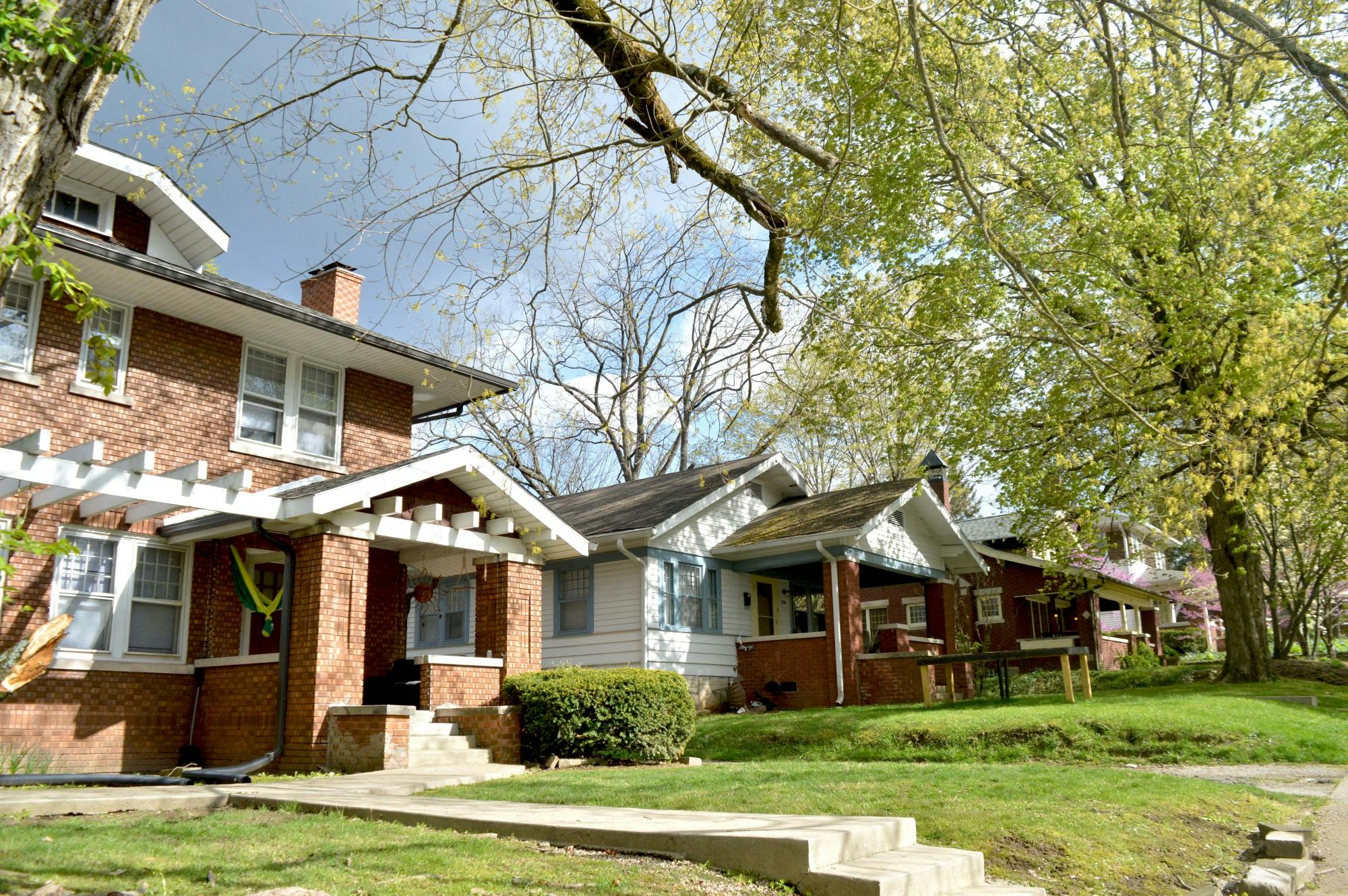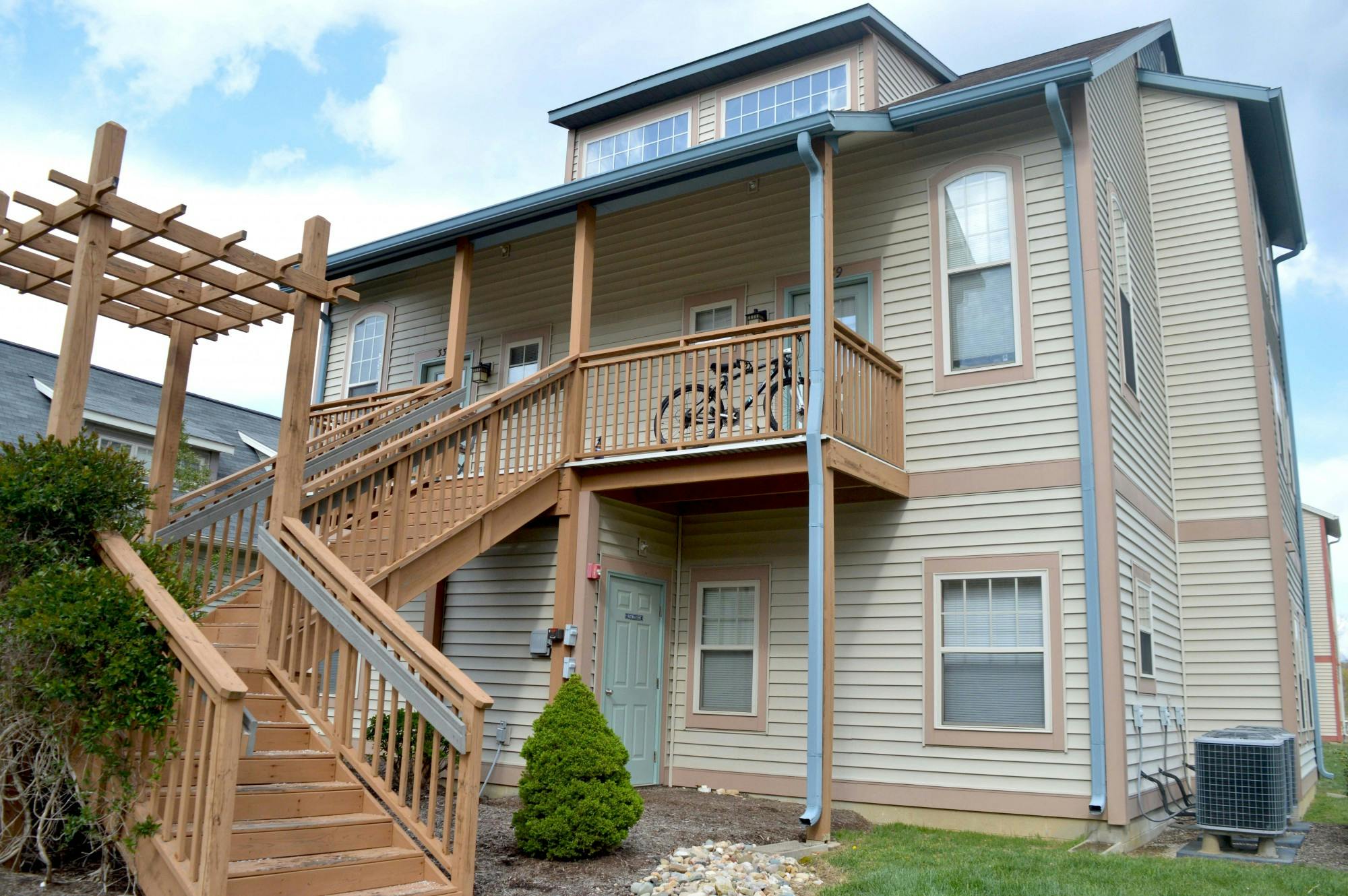Sandberg said she is not opposed to the plexes but doesn’t think they should be allowed in core neighborhoods and should instead be developed along major corridors and transportation lines. Not everyone can live downtown, she said, and housing should be spread out, not focused in already dense neighborhoods.
The city planning staff has excluded the part of the Comprehensive Plan regarding developing commercial nodes or “village centers” around Bloomington in the UDO, Sandberg said.
Commercial nodes and surrounding neighborhoods would replicate the walkability and connectivity in downtown to bring city services closer to more residents, Sandberg said, much like the area around South Henderson Street and East Hillside Drive.
Related: [Bloomington City Council approves rezoning plan for new apartment complex near College Mall]
Through the inclusion of the R4 district, Dorfman said the UDO is attempting to densify core neighborhoods and is ignoring the part of the Comprehensive Plan about establishing village centers and steering new development away from dense single-family home neighborhoods.
The Comprehensive Plan and the UDO do not have a one-to-one correspondence, Planning and Transportation Director Scott Robinson said in a statement to the Indiana Daily Student, and city planning staff make recommendations on how to best apply the plan’s policies and land use designations to the UDO.
Commercial nodes are separate from the proposed R4 district and included in older neighborhoods and areas further away from downtown in the Comprehensive Plan, Robinson said. City officials can interpret the plan to best reflect current and desired land use patterns, he said.
Dorfman said city amenities should be spread around the city rather than concentrated downtown.
“The city has radically oversold the value of this idea of being able to walk to downtown from where you live,” he said. “It's nice, but it's not what defines life in Bloomington.”
“With greater density in the city comes the challenge to preserve neighborhood character and the opportunity to strengthen neighborhoods by developing small commercial nodes as community gathering places. Existing core neighborhoods should not be the focus of the city’s increasing density.”
SOURCE: City of Bloomington Comprehensive Plan
Will historic buildings be demolished in favor of duplexes? It’s extremely unlikely.
Some regulations of Bloomington’s historic and conservation districts trump R4 building permissions to preserve the historical legacy of the homes within those districts. Some core neighborhoods, such as Elm Heights and Prospect Hill, are designated as historic districts and have special building protections.
Historic Preservation Program Manager Conor Herterich said homes will not be bought, demolished and replaced with duplexes in neighborhoods classified as conservation and historic districts.
“There's really no concern that there's going to be houses knocked over in these core area neighborhoods and replaced with duplexes,” he said. “It's just not going to happen.”
However, these protections are not extended to neighborhoods that are not conservation or historic districts.
In a historic district, the Bloomington Historic Preservation Commission reviews any demolition, new construction or external alteration, Herterich said. These include changes as small as replacing windows or front doors.
The commission cannot dictate use of a property, meaning it could not stop someone from turning their property into a duplex if certain stipulations are still met, Herterich said. As long as additions or renovations don’t jeopardize a home’s historic character or structural integrity, he said owners could turn homes in those districts into plexes.
Herterich said a conservation district is a more suitable classification than a historic district for neighborhoods with a substantial amount of historic features and buildings that also have new construction.
A conservation district is more lenient than a historic district and only requires commission review for full demolition, moving a structure outside that district and new construction.
After three years from a conservation district’s creation, Herterich said 51% of property owners need to provide a written rejection or it will become a historic district. This has happened three times in Bloomington: in Prospect Hill, McDoel Gardens and Matlock Heights.
The commission is not going to give someone a permit to demolish a perfectly fine house, Herterich said. For certain historical structures, the property is subject to demolition delay, which requires a demolition permit to undergo commission review.
If the ordinance to create R4 is passed, Herterich said it would take a significant period of time to see any changes in historically protected neighborhoods. Additionally, few empty lots are available to build new structures in conservation and historical districts.
Decades of neglect and deferred maintenance on multiple lots would have to take place for the historic character of a neighborhood to be destroyed and changed with new construction, he said.
“I just don't see that happening overnight, or very quickly, if that happens,” he said. “It really has to be kind of a slow death by 1,000 cuts type of scenario.”
“I just don't see that happening overnight, or very quickly, if that happens,” he said. “It really has to be kind of a slow death by 1,000 cuts type of scenario.”
— Conor Herterich, Historic Preservation Program Manager
Herterich said an example of how difficult it is to obtain a demolition permit is 309 S. Davisson St. in Greater Prospect Hill, a historic district. He said the homeowner sought to have the structure demolished after a local builder found almost 60% of the original material needed to be replaced to save it. The commission denied demolition of the home, despite it being located in a more lenient historic district.
“If they're going to deny a house like that for demolition, they're gonna deny most of everything for demolition,” Herterich said.



